Tiffany lamps are magical artifacts in the collecting world. Illuminate one, and all the creative passion that went into its conception electrifies the viewer today.
This transmitted passion has been the catalyst for great collections formed in the past. Many of the jewel-like lamps are now on display in museums for all to enjoy. But other notable collections have come back on the market, giving today’s appreciative buyers a chance to live with those heart-stopping displays of colored light.
Allen Michaan and his auction firm in Alameda, California, were chosen to handle the sale of one of the greatest assemblages of Tiffany creations ever amassed, the Garden Museum Collection from Japan.
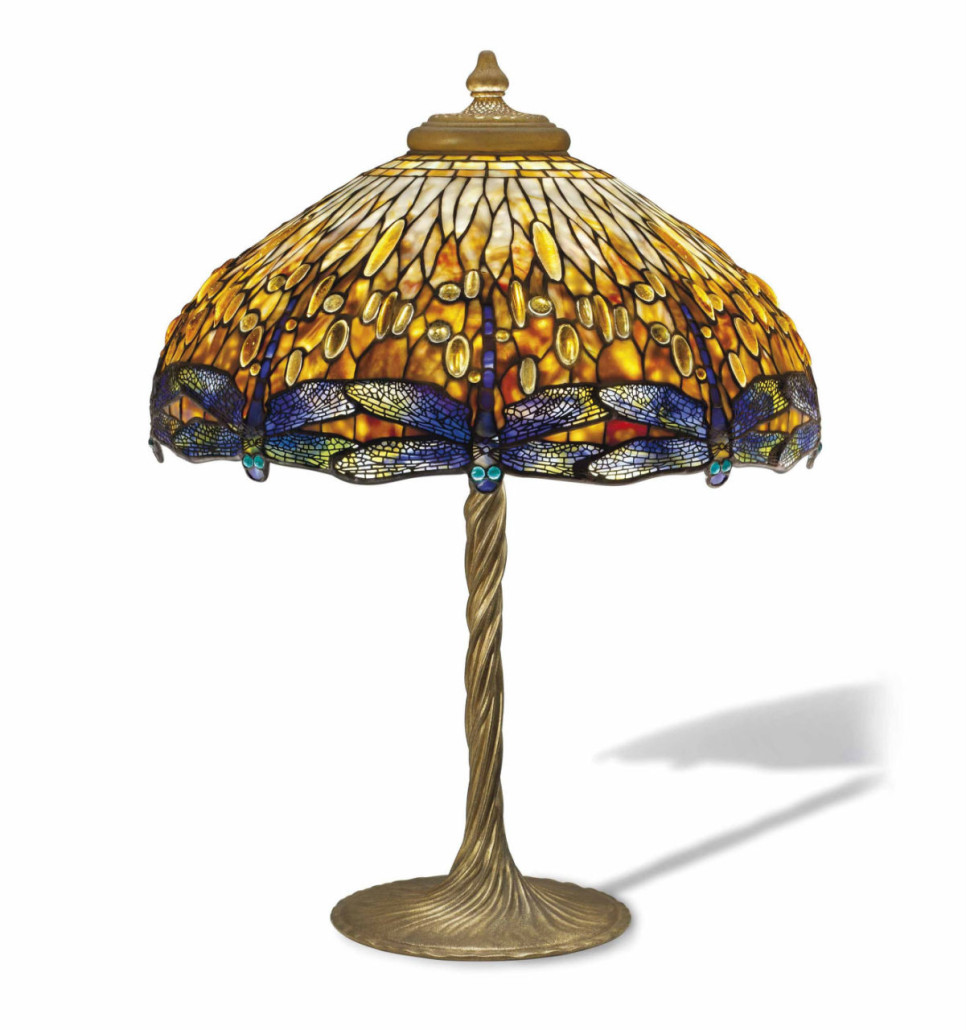
“Tiffany is something that is so extraordinary in its beauty and its value – it will always be very popular,” said Michaan. “Whenever there is a downturn in the market, it comes back stronger than ever before. The glass is tremendous – unrivalled anywhere – amazing stuff. Art speaks to something within our souls, if one is lucky enough to have that aesthetic appreciation. While that exists, collectors will continue to pursue beautiful things for their environment.”
This landmark collection was assembled by Japanese real estate magnate Takeo Horiuchi with the expert advice of decorative arts scholar Alastair Duncan, formerly a specialist for Christie’s. Duncan prepared an enduring record of the entire collection before its dispersal. Horiuchi not only bought the best lamps, he was drawn to every aesthetic medium that Tiffany explored. The massive volume, Louis C. Tiffany: The Garden Museum Collection covers the entire creative output of the inspired designer from paintings and furniture to mosaics and windows to silver and jewelry. The prolific illustrations of the collection are reinforced by vintage photographs of Tiffany, his family, and the artists and craftsmen of Tiffany Studios.
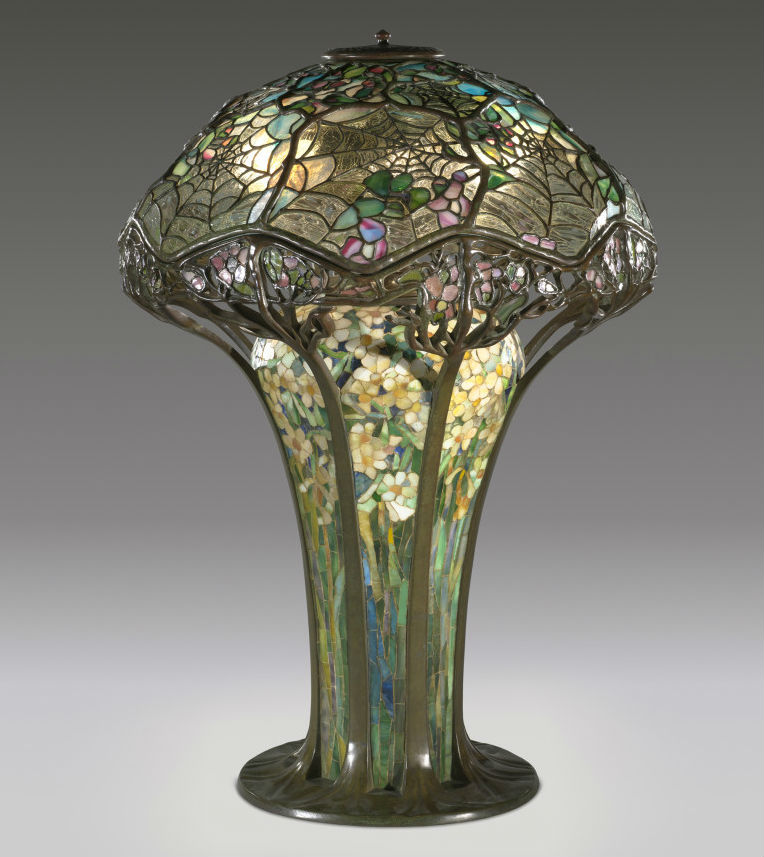
Louis Comfort Tiffany (1848-1933) was born into a privileged and successful family. His father, Charles L. Tiffany (1812-1902), had left Connecticut in the 1830s to open a luxury goods store featuring fine jewelry and silver in Manhattan. Louis was determined to be a painter. His talent is demonstrated by the late 19th century oils and watercolors inspired by his travels, including some excellent Orientalist views of Algiers with emphatic light and shadow.
A turning point came in the 1870s when Louis C. Tiffany became fascinated with the properties of glass, an interest that he expressed in architectural windows for domestic and ecclesiastical properties, glass-shaded lamps, and formulas for art glass. Drawing on influences classical and exotic, Tiffany developed a well-defined aesthetic style and became sought after as an interior designer, a career where he could put his love of glass into play.
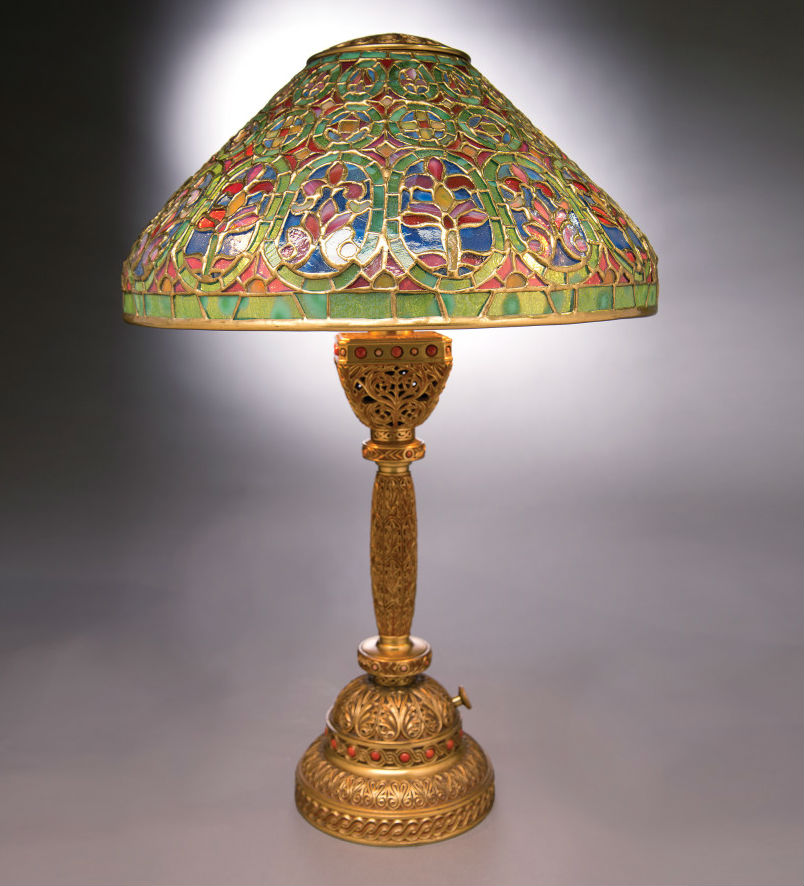
Tiffany’s first lamps were made in the late 1890s, some still using combustible fuels. He had his own glassmaking company by this time. In 1902, he named his multibranched firm Tiffany Studios, while he also served as design director for the family Tiffany & Co. brand. Tiffany Studios had their own showroom at 45th and Madison in New York. A vintage photograph from the early 20th century shows a varied display of windows, hanging light fixtures, and lamps integrated into elaborate desk and table settings. Other early images show teams of men and woman assembling thousands of pieces of glass into lamps and windows.
While Tiffany designed some lamps himself, he employed many talented artists including favorite Clara Driscoll, creator of the popular Dragonfly designs and head of his Women’s Glass Cutting Department. In 1904, The New York Daily News named her as one of the few American women earning over $10,000 a year. Alastair Duncan illustrated the Garden Museum example of her dragonfly and Water Lily lamp with a mosaic base. Sold for $90 at the time of its manufacture, the 16-inch lamp would have been in vogue on a writing desk or dressing table in a well-to-do household. Although out of style by the time Louis C. Tiffany died in 1933, the lamps almost immediately began a climb back into fashion driven by serious dealers and collectors.

Hugh F. McKean and his wife, Jeannette, were among those passionate collectors and became the saviors of architectural material from Tiffany’s estate, Laurelton Hall. In his book on The “Lost” Treasures of Louis Comfort Tiffany, McKean opens the chapter on “Lamps” by writing about the artist’s love of light, color and glass: “When all things are considered, his lamps were an inevitable development in his career. … Lamps were one art form that offered an opportunity to satisfy all three desires. … Obviously the shades were made on an assembly line basis, and obviously Tiffany viewed the matter with sensible satisfaction because a lot of beauty was going into American homes and a lot of sales were being entered in his books.”
More lamps, windows and elements from Laurelton Hall on Oyster Bay are on view at the Metropolitan Museum of Art in New York City, Tiffany’s home base. Alice Cooney Frelinghuysen, the museum’s curator of American Decorative Arts, has explored the designer’s multifaceted creativity in Louis Comfort Tiffany at the Metropolitan Museum of Art and Louis Comfort Tiffany and Laurelton Hall: An Artist’s Country Estate. She also contributed to another important resource for collectors, The Lamps of Louis Comfort Tiffany.
On view elsewhere in New York are highlights from one of the earliest modern collections of Tiffany lamps and windows. In 1935, when less prescient collectors were occupied elsewhere, Dr. Egon Neustadt and his wife, Hildegard, bought their first Tiffany lamp – a Daffodil design – when it was just “secondhand,” not antique.
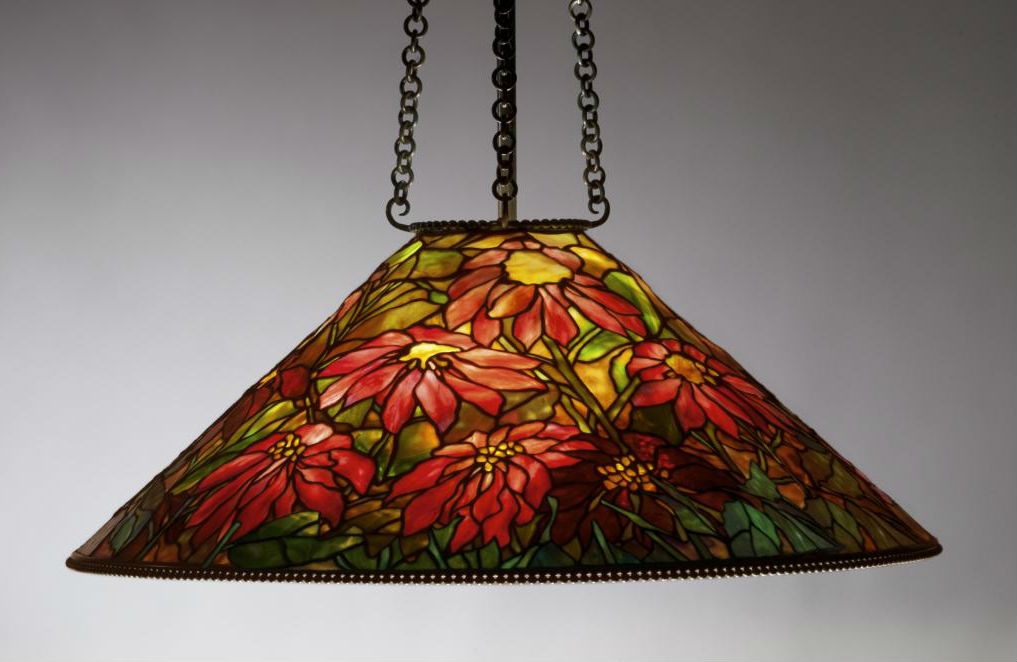
Lindsy Parrott, director/curator of the Neustadt Collection, said, “Because he started collecting so incredibly early, at a time when these things were much more affordable, he was able to get so many superb examples, not just lesser examples that were in his price range. He had such incredible vision and foresight to recognize the beauty that these works of art possessed when they were being tossed out because tastes had changed so much. You just have to hang onto these things and be patient because they will come back around.”
Christie’s New York has long held the world record for a Tiffany lamp at auction. The Pink Lotus lamp sold for $2.8 million in December 1997. The leaded glass outer shade with a continuous frieze of water lilies is open at the top to reveal a set of eight small Favrile glass shades within. Carolyn Pastel, senior specialist in 20th Century Decorative Art and Design, said: “They’re not all equal. Tiffany had a tremendous output. You have a lot of material to potentially collect from Tiffany at various price points.
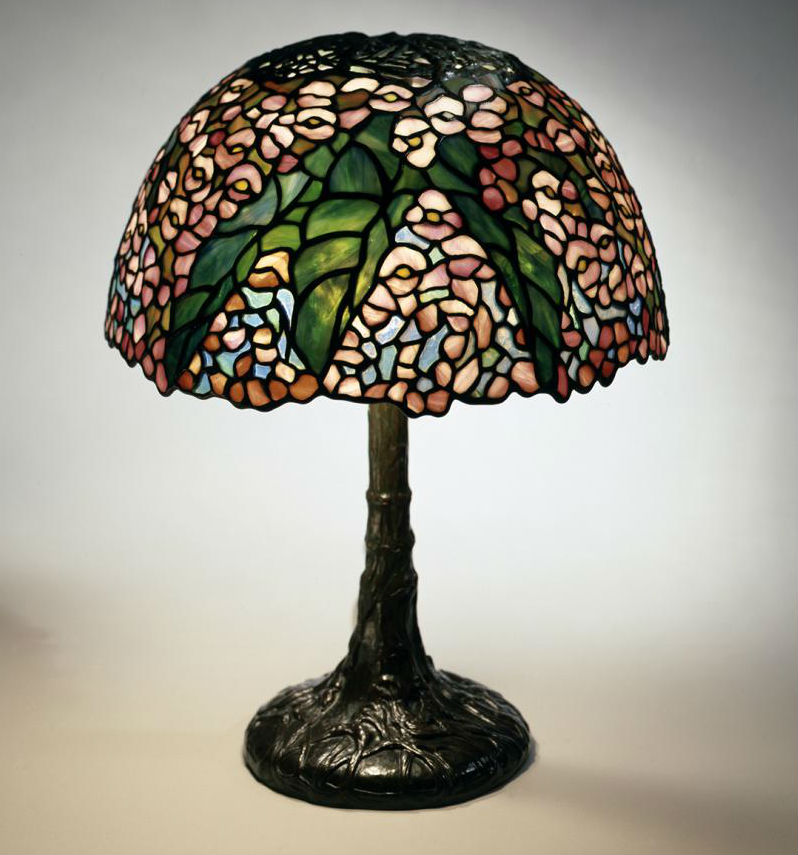
“In terms of collecting, you are looking at rarities, for sure. Top works, such as the Wisteria lamp, are very sought after. There was definitely limited production because it was a very difficult piece to make. Do we have the exact number? No, but over time you can make a general assessment of how many were made. For the Lotus lamp, we know only a few were ever made. On the other hand, many Dragonfly lamps were produced because that design was tremendously popular. There are variations in the size of the shade as well as the dragonfly.”
Good condition is important as well. Cracks may exist, but they should not be distracting to the eye. Exact colors vary from shade to shade, and buyers may be choosy about which hues they prefer.
Pastel emphasizes the importance of a lamp’s past history: “What you’re seeing now with the Tiffany market is that provenance is really becoming more important for collectors. You want to go back as far as you possibly can – when was it inherited, what’s the story behind it – as many details as possible.”
Cherished in great collections over the past 80 years, Tiffany lamps stand poised to arouse the passions of a millennial generation.


